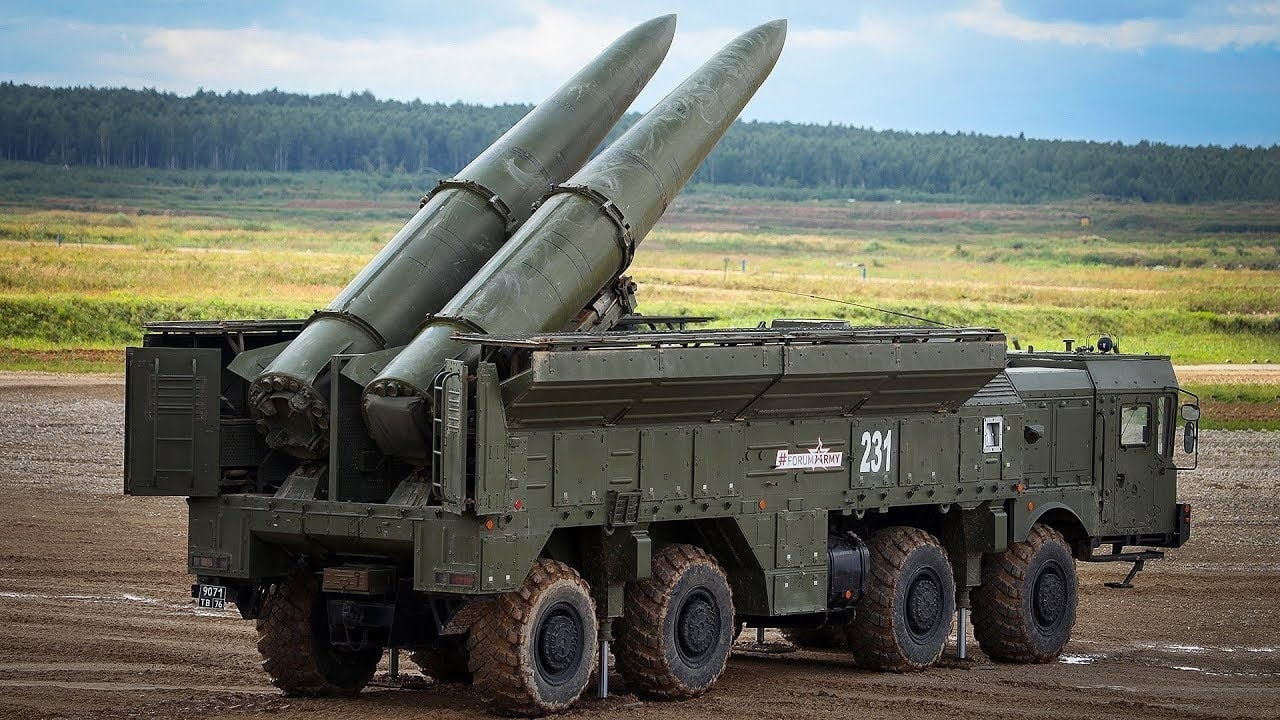In recent months, hostilities between Russian and Ukrainian forces have ramped up nearly fifteen months into the invasion. As the bloody battle for the eastern city of Bakhmut continues to unfold, Moscow is unleashing barrages of missile and drone attacks targeting Kyiv and the surrounding areas. Earlier this week, Ukraine’s Air Force revealed that it had destroyed 11 Iskander short-range ballistic missiles and cruise missiles launched toward the country.
Footage of Ukrainian civilians taking shelter in underground metro systems in Kyiv widely circulated, highlighting the constant fear of bombardment in the city. Designated by the North Atlantic Treaty Organization (NATO) as SS-26 “Stone,” Russia’s 9K720 Islander missile system is responsible for delivering the country’s ballistic missile arsenal. The Iskander is the Kremlin’s most advanced ballistic and cruise missile launcher in service today.
The history behind the Iskander
The Iskander system was derived in the 1980’s by the Russian army to replace the aging Scud missile. Developed during the Soviet era, the Scud series of tactical ballistic missiles were widely exported and used extensively in conflicts in the Middle East.
Initially, the USSR produced the OTR-23 Oka mobile ballistic missile to replace the Scud missile during the final years of the Cold War. However, the Intermediate Nuclear Forces (INF) Treaty banned the OTR-23 in the late 1980’s, since several Warsaw Pact countries procured the missile systems with equipment to load Soviet nuclear warheads. By 1988, design work on the Iskander commenced, and the missile launcher carried out its first successful launch in the mid-1990s.
Within a decade, the weapon was acquired by the Russian military, and the missile officially became operational.
Specs & capabilities
The Iskander designation is used to identify the missile launch system and its associated ballistic missiles, like the 9M723 (Iskander-M) and the 9M720 (Iskander E). The weapon features two solid-propellant single-stage guided missiles and can locate targets using satellite and aircraft in addition to conventional intelligence including an artillery observer or from scanned footage. Moscow has used the Iskander-M ballistic missile to target infrastructure and military personnel in Ukraine.
As detailed by the Center for Strategic and International Studies, the 9M723 missile uses “acombination of inertial, GLONASS, and radar terrain correlation guidance, the missile can strike targets within a circular error probable (CEP) of 2-5 meters. The 9M720 export model employs inertial guidance for midcourse flight and electrooptical terminal guidance to achieve accuracies between 5 and 10 m CEP. Several units may also be fitted with a digital scene matching area correlation (DSMAC) terminal guidance system, which was first tested in 2011 and entered service in 2012.”
While the Iskander tactical missile system has served the Russian Forces relatively well over the last year of warfare, many experts believe Moscow could run into a weapons shortage. Last summer, Ukrainian intelligence officials claimed that Russia only possessed 20% of its Iskander-M ballistic missile stockpile. Obviously, Moscow is continuing to fire these lethal weapons toward Ukraine.
While it is difficult to gauge the exact quantity of weapons remaining in Russia’s arsenal, the Kremlin does not have an infinite supply and will sooner or later- if not already- run low.
Maya Carlin, a Senior Editor for 19FortyFive, is an analyst with the Center for Security Policy and a former Anna Sobol Levy Fellow at IDC Herzliya in Israel. She has by-lines in many publications, including The National Interest, Jerusalem Post, and Times of Israel. You can follow her on Twitter: @MayaCarlin.
From 19FortyFive
How To Sink A $3 Billion Dollar Submarine: Leave A Hatch Open
Smashed To Pieces: Video Shows Ukraine Hitting Russian Air Defenses

